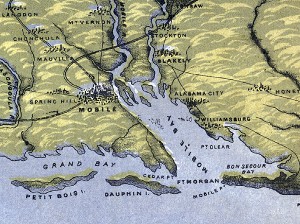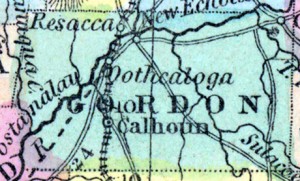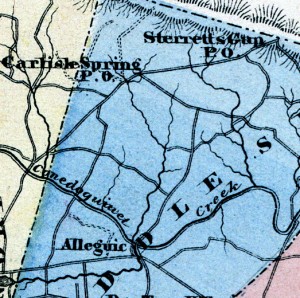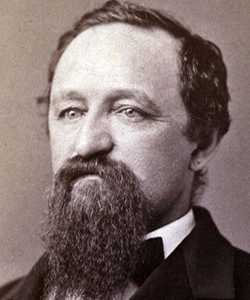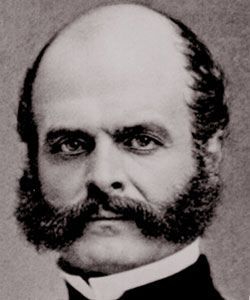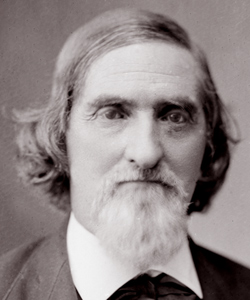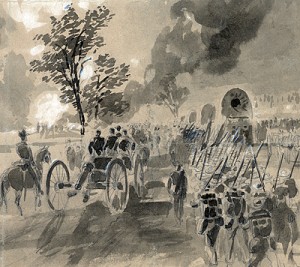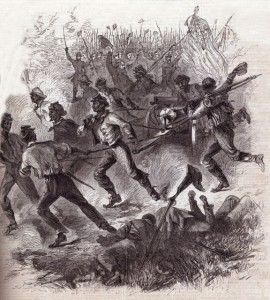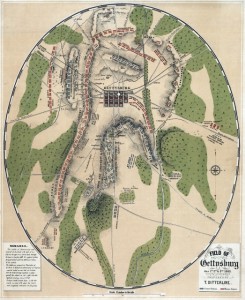 The Battle of Nashville took place on December 15-16, 1864 in Davidson County, Tennessee as a part of the Franklin-Nashville Campaign. Beginning in November 1864, Confederate General John Bell Hood led the Army of Tennessee towards Nashville in a last attempt to move Union Major General William T. Sherman out of Georgia. By December 1, 1864 Union Major General George H. Thomas and his forces reached Nashville and spent the next two weeks preparing for battle. The fighting began in the morning on December 15 with most of the Union assaults on the Confederates ending successfully. The following day, the Union troops charged the Confederate forces and made them abandon Nashville and retreat across the Tennessee River. The Civil War Preservation Trust’s website offers an article: “The Decisive Battle of Nashville” that provides an overview of the fighting. The website also includes a map that depicts troop movements on both sides as well as brief biographies of General Hood and General Thomas. Also, the Battle of Nashville Preservation Society website offers historic sites and photographs related to the battle. Some other resources that may be useful are the Memoir of Major General George H. Thomas and John Bell Hood’s Advance and Retreat: Personal Experiences in the United States and Confederate Armies which could provide contrasting views from commanding officers in both the Union and Confederate Armies to give different perspectives of the battle. Richard M. McMurry commented on the Battle of Nashville in his book:
The Battle of Nashville took place on December 15-16, 1864 in Davidson County, Tennessee as a part of the Franklin-Nashville Campaign. Beginning in November 1864, Confederate General John Bell Hood led the Army of Tennessee towards Nashville in a last attempt to move Union Major General William T. Sherman out of Georgia. By December 1, 1864 Union Major General George H. Thomas and his forces reached Nashville and spent the next two weeks preparing for battle. The fighting began in the morning on December 15 with most of the Union assaults on the Confederates ending successfully. The following day, the Union troops charged the Confederate forces and made them abandon Nashville and retreat across the Tennessee River. The Civil War Preservation Trust’s website offers an article: “The Decisive Battle of Nashville” that provides an overview of the fighting. The website also includes a map that depicts troop movements on both sides as well as brief biographies of General Hood and General Thomas. Also, the Battle of Nashville Preservation Society website offers historic sites and photographs related to the battle. Some other resources that may be useful are the Memoir of Major General George H. Thomas and John Bell Hood’s Advance and Retreat: Personal Experiences in the United States and Confederate Armies which could provide contrasting views from commanding officers in both the Union and Confederate Armies to give different perspectives of the battle. Richard M. McMurry commented on the Battle of Nashville in his book:
“Late that rainy day, as Hood was conferring with Stewart, the Yankee’s swarmed over Shy’s Hill, annihilating the defenders and sending the remnants of Cheatham’s corps flying off in mad panic. The rout spread to Stewart’s corps. Only Lee’s men preserved a semblance of order, as most of the army dissolved and fled southward in darkness and rain. Hood and other officers tried desperately to rally the fleeing soldiers, but, save for a brave, defiant few who turned to fire at the Federals, their efforts were in vain. Over the fast thawing ground and through sticky mud, the Confederates made their way southward, while Lee strung his corps across the rear of the army to slow the Yankee pursuit. All that night Hood’s men jammed the roads southward from Nashville, abandoning wagons and cannons, throwing away muskets, swords, knapsacks, and camp equipment.”
